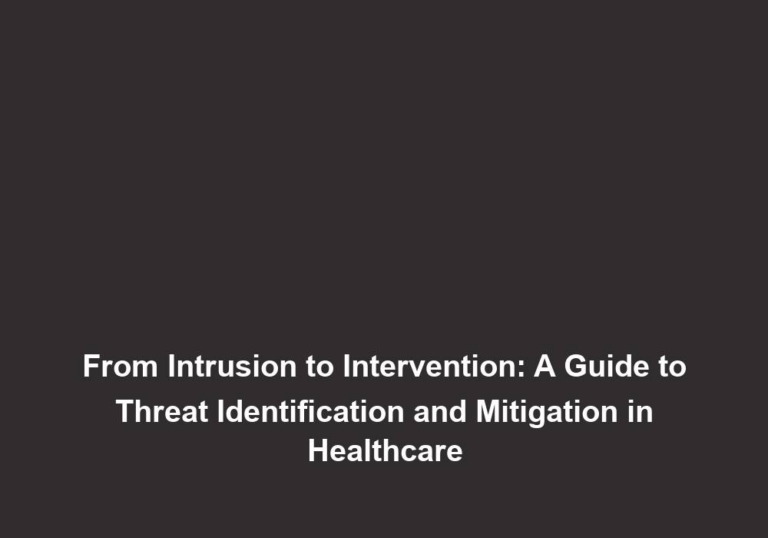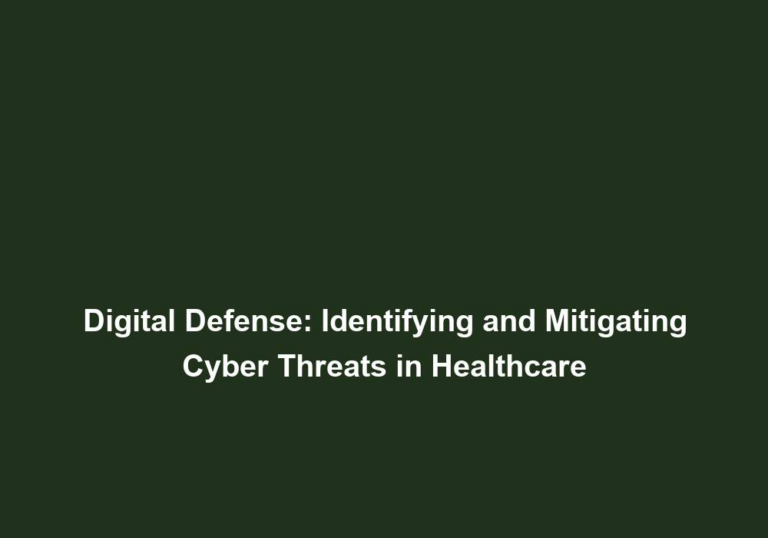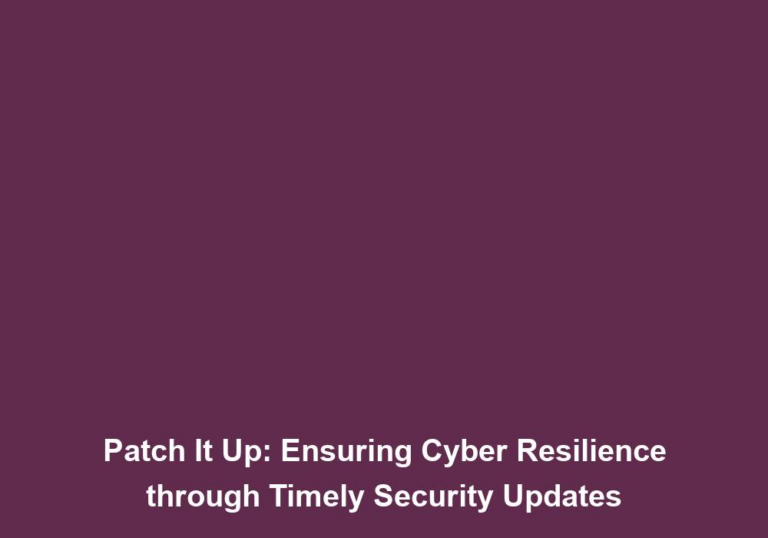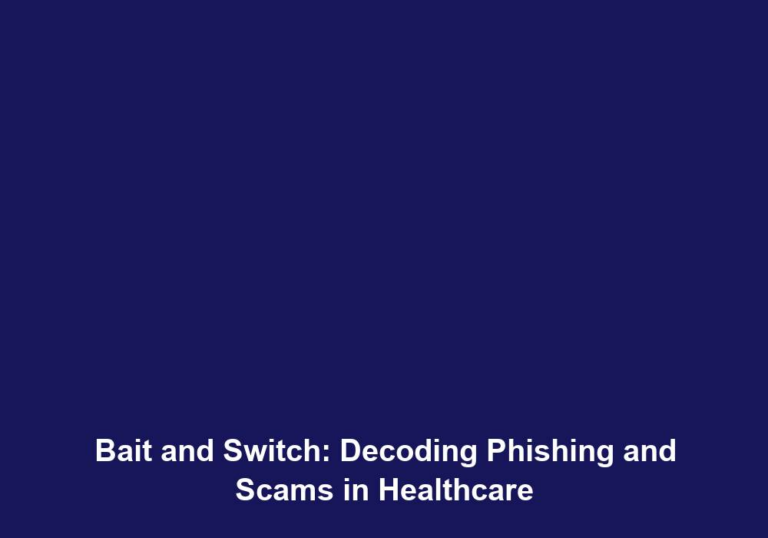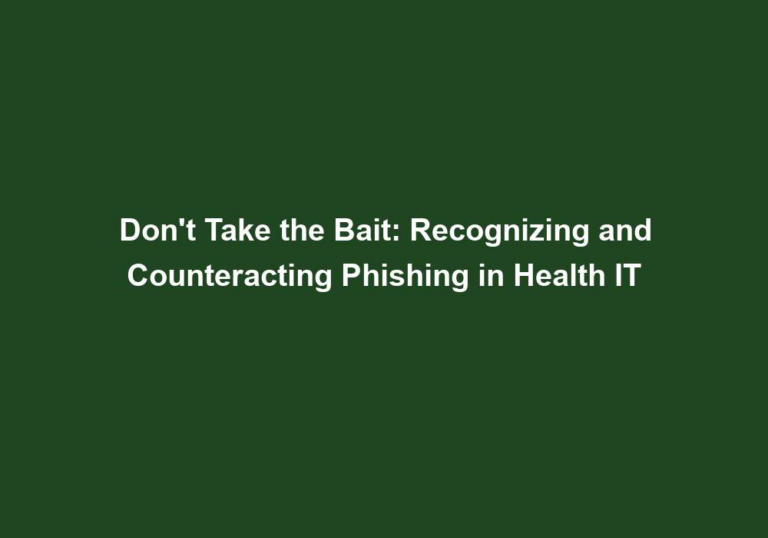Guarding the Digital Battlements: Security Updates and Patch Management
In today’s digital landscape, safeguarding sensitive information and ensuring the security of online systems has become more critical than ever. With the increasing prevalence of cyber threats and malicious attacks, organizations must prioritize their cybersecurity measures to protect their valuable data and maintain the trust of their customers. One essential aspect of this defense is implementing regular security updates and effective patch management strategies.
Why are Security Updates and Patch Management Important?
Security updates and patch management play a crucial role in fortifying the digital battlements against potential cyber threats. Here’s why they are so important:
-
Addressing Vulnerabilities: Every software or operating system has vulnerabilities that can be exploited by cybercriminals. Security updates and patches are designed to fix these vulnerabilities, ensuring that the systems are protected against potential attacks. By regularly applying updates, organizations can stay one step ahead of hackers and minimize the risk of data breaches.
-
Protecting Against Exploits: Cyber attackers constantly search for vulnerabilities in software and systems. By keeping up with security updates and applying necessary patches, organizations can safeguard themselves against known exploits and significantly reduce the risk of falling victim to attacks. This proactive approach helps in maintaining the integrity and confidentiality of sensitive data.
-
Enhancing System Performance: Apart from security enhancements, updates and patches often come with performance improvements. By regularly updating the software, organizations can optimize system performance, ensuring smooth operations and minimizing downtime. These updates may include bug fixes, code optimizations, and feature enhancements that contribute to overall system efficiency.
-
Compliance Requirements: Many industries have specific regulations and compliance requirements related to data security. Implementing regular security updates and patch management helps organizations meet these obligations and avoid any legal consequences. By staying up to date with the latest security measures, businesses can demonstrate their commitment to protecting customer information and maintain compliance with industry standards.
The Importance of Proactive Security Measures
Taking a proactive approach to security updates and patch management is crucial for staying one step ahead of cyber threats. Here are some key steps to ensure an effective and efficient strategy:
1. Regular Monitoring and Evaluation
To maintain a secure digital environment, organizations must establish a system for regularly monitoring and evaluating their software and systems. This process involves:
-
Identifying Vulnerabilities: Continuously scanning systems and software applications for vulnerabilities is essential to stay informed about potential security risks. Organizations can use automated tools or engage in manual assessments to identify and prioritize vulnerabilities based on their severity.
-
Prioritizing Updates: Assessing the severity of vulnerabilities and prioritizing updates based on the level of risk they pose is critical. This allows organizations to focus their resources and efforts on addressing the most critical issues first. By prioritizing updates, organizations can allocate their resources effectively and ensure that the most significant security risks are addressed promptly.
-
Creating a Patch Management Plan: Developing a comprehensive patch management plan that outlines the process for evaluating, testing, and deploying updates is essential. This plan should include a schedule for regular updates and define responsibilities for different team members involved in the patch management process.
2. Timely Deployment of Updates
Once vulnerabilities are identified and updates are available, organizations must promptly deploy these updates across their systems. Timeliness is key here, as any delay could leave systems exposed to potential threats. To ensure efficient deployment:
-
Automated Updates: Implementing an automated update deployment system can streamline the process and ensure that critical patches are applied promptly. This approach reduces the chances of human error and ensures consistent and timely updates across all systems.
-
Creating a Test Environment: Before deploying updates in a production environment, it is essential to create a test environment to assess compatibility and potential impacts. This allows organizations to identify any issues or conflicts that may arise due to the updates and mitigate them before deployment.
3. Testing and Ensuring Compatibility
Before deploying updates across all systems, it’s crucial to thoroughly test them on a smaller scale to identify any compatibility issues. This testing process helps organizations avoid potential disruptions that may arise due to incompatibilities. Some best practices for testing and ensuring compatibility include:
-
Sandbox Environment: Creating a sandbox environment allows organizations to assess the impact of updates before deploying them across the entire system. By testing updates in an isolated environment, organizations can identify and resolve any compatibility or functionality issues without risking the stability of the production environment.
-
User Acceptance Testing: Involving end-users in the testing process can provide valuable feedback and help identify any usability issues that may arise due to updates. Conducting user acceptance testing ensures that the updates do not negatively impact the user experience and allows organizations to make necessary adjustments before full deployment.
4. Patch Management Best Practices
To optimize the patch management process, following these best practices can help organizations maximize their security efforts:
-
Centralized Patch Management: Implementing a centralized patch management system enables organizations to efficiently manage updates across multiple systems and keep track of the overall security status. This centralized approach streamlines the patching process, reduces administrative overhead, and ensures consistent updates across all systems.
-
Regular Backup: Performing regular backups ensures that in case of any unforeseen events during the patching process, organizations can quickly recover and restore their systems to their previous state. Backups provide an additional layer of protection and help mitigate any potential risks associated with the patching process.
-
Risk Assessment: Conducting regular risk assessments allows businesses to assess their vulnerabilities, identify potential threats, and allocate resources accordingly. By understanding their unique risk landscape, organizations can prioritize their patch management efforts and focus on addressing the most critical security risks.
-
Employee Awareness and Training: Educating employees about the importance of security updates and patch management helps foster a culture of cybersecurity awareness and ensures that everyone understands their role in maintaining a secure digital environment. Training programs can cover topics such as identifying phishing attempts, reporting suspicious activities, and following secure practices while using company systems.
Conclusion
In the ever-evolving digital world, organizations must prioritize security updates and implement effective patch management strategies to protect their digital battlements. By regularly applying updates, addressing vulnerabilities, and following best practices, businesses can significantly reduce the risk of cyber-attacks, protect sensitive information, and maintain the trust of their customers. Remember, cybersecurity is a continuous process, and staying vigilant is crucial to safeguarding your digital assets.


